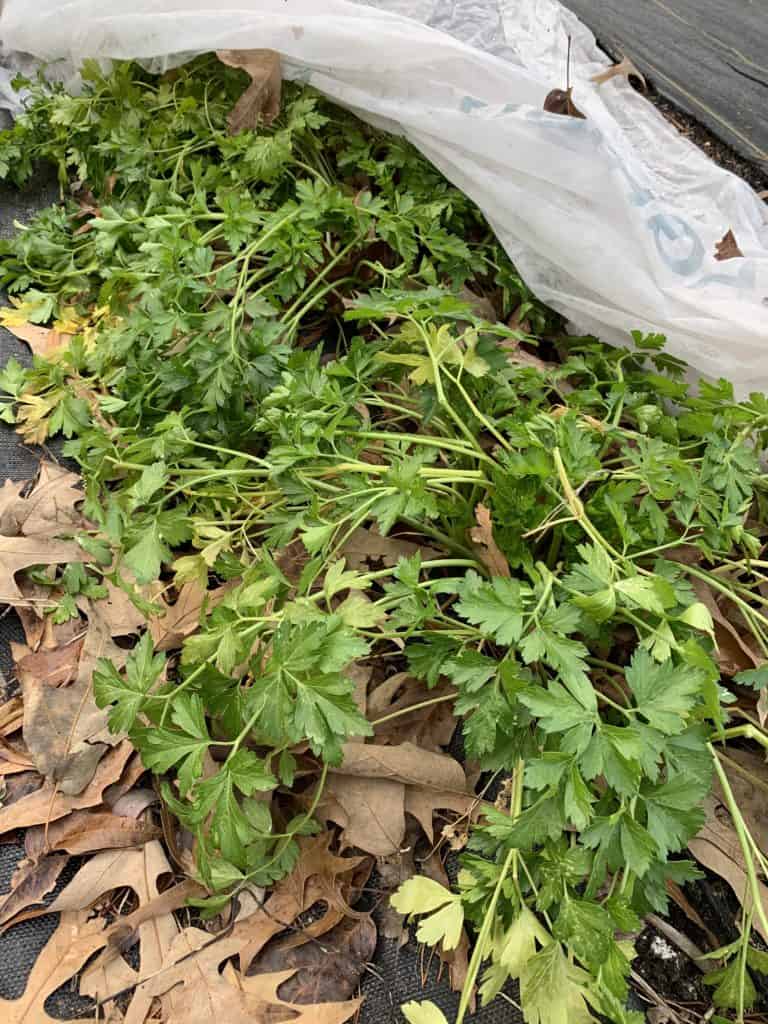Gardening for Health

Plan Your 2021 Garden
By Maria Price
What a year! I am glad to see it go. Now is the time to think about what changes you can make in your garden for the coming year. After watching mile after mile of people in food lines, you can plan for future food security by growing as many vegetables as possible. Not only will a well-planned garden provide food but it will help save money, too.
Pictured is a row of parsley, which is a biennial. I started it last spring and with all the rain we’ve had, it’s done remarkably well. I covered it with polypropylene row cover fabric to protect it from extreme cold. It’s wonderful to have so much parsley for tabbouleh salad, vinaigrettes, soups and stews. I will plant it again in the spring as it will go to seed next summer. Parsley contains vitamins A and C and has historically been used as a breath freshener. It has a mild diuretic action and has been shown to inhibit the secretion of histamine, a chemical that triggers allergy symptoms. It therefore, might help with hay fever.
Most people can’t grow all their vegetables, but a new year is the time to get creative. You can grow quite a lot in pots and they can still be attractive. Use an 18- to 20-inch container and grow colorful Swiss chard in the center, parsley around that and lettuce around that. Some trailing mini petunias around the edges will keep it colorful all summer.
The soil warms earlier in a raised bed, maximizing the harvest time of sugar snap peas or other early veggies. Try building a 16-square foot garden, 4 feet by 4 feet. The garden’s contents can change from spring to summer to fall, and could save you over $150 compared to buying all your produce from a grocery store.
In early spring, you can plant seeds for lettuces, Swiss chard, sugar snap peas, carrots and radishes in your 16-square foot garden. As you pull the radishes, it can leave more room for the carrots to grow.
For summer, once the danger of frost is past, usually around Mother’s Day, you can sow squash, beans, peppers, and eggplant. As your early spring vegetables are harvested you can fill in with warm season plants. Plant an indeterminate tomato, with a tomato cage, to keep growing and producing all season until frost. (Determinant plants grow to their full size and set fruit all at once.) “Better Bush” is a special hybrid that stays small and produces like crazy.
By the end of August, most of your warm season vegetables begin to decline, so you can make room for short season produce. Spinach is a great one to put in since it can be ready in just 22 days. Mesclun mix or other lettuces will take about 28 days. Both of these will take early frost and cold weather.
Make sure to nourish your soil with compost and any organic matter to feed the organisms in the soil. Here’s to growing great food in 2021!
